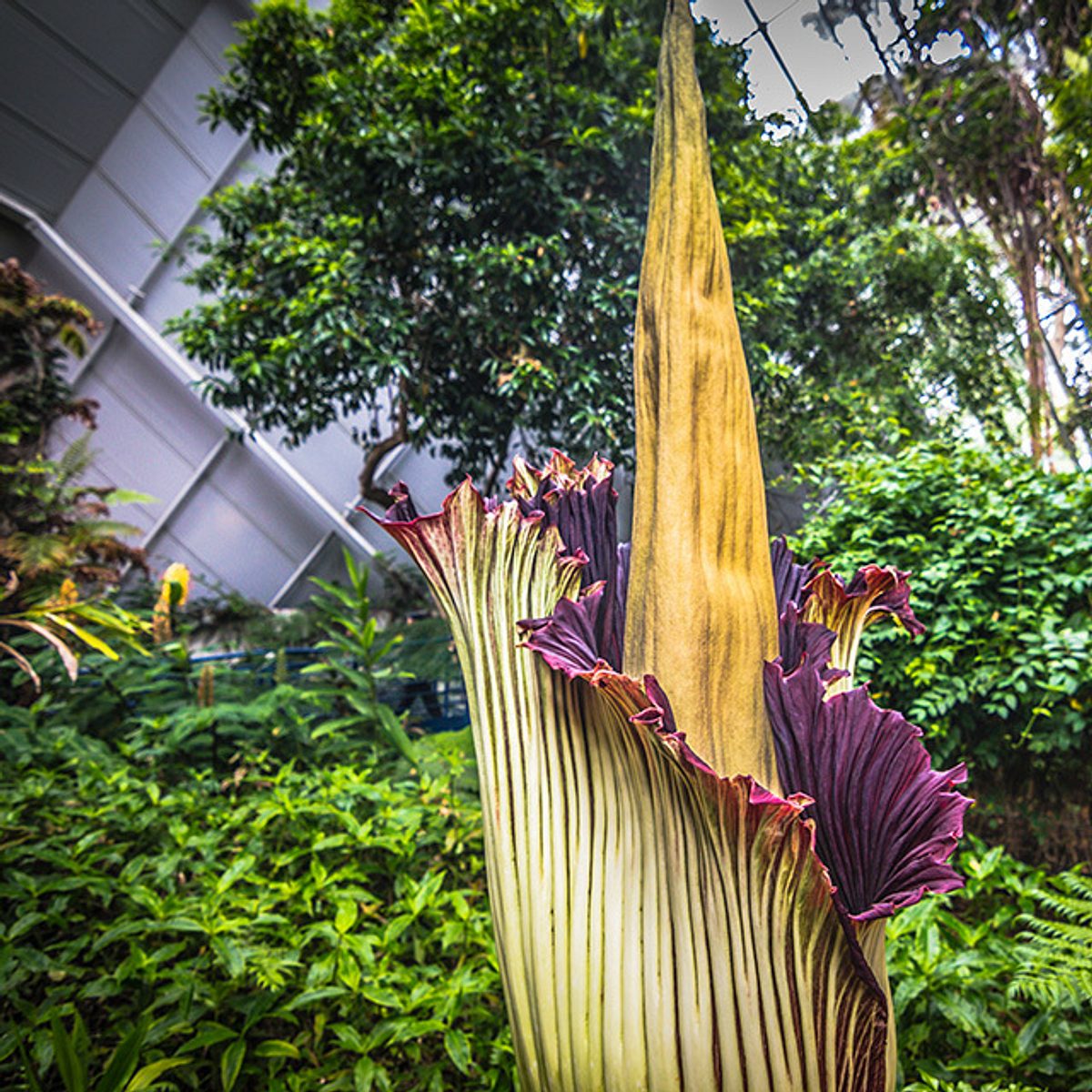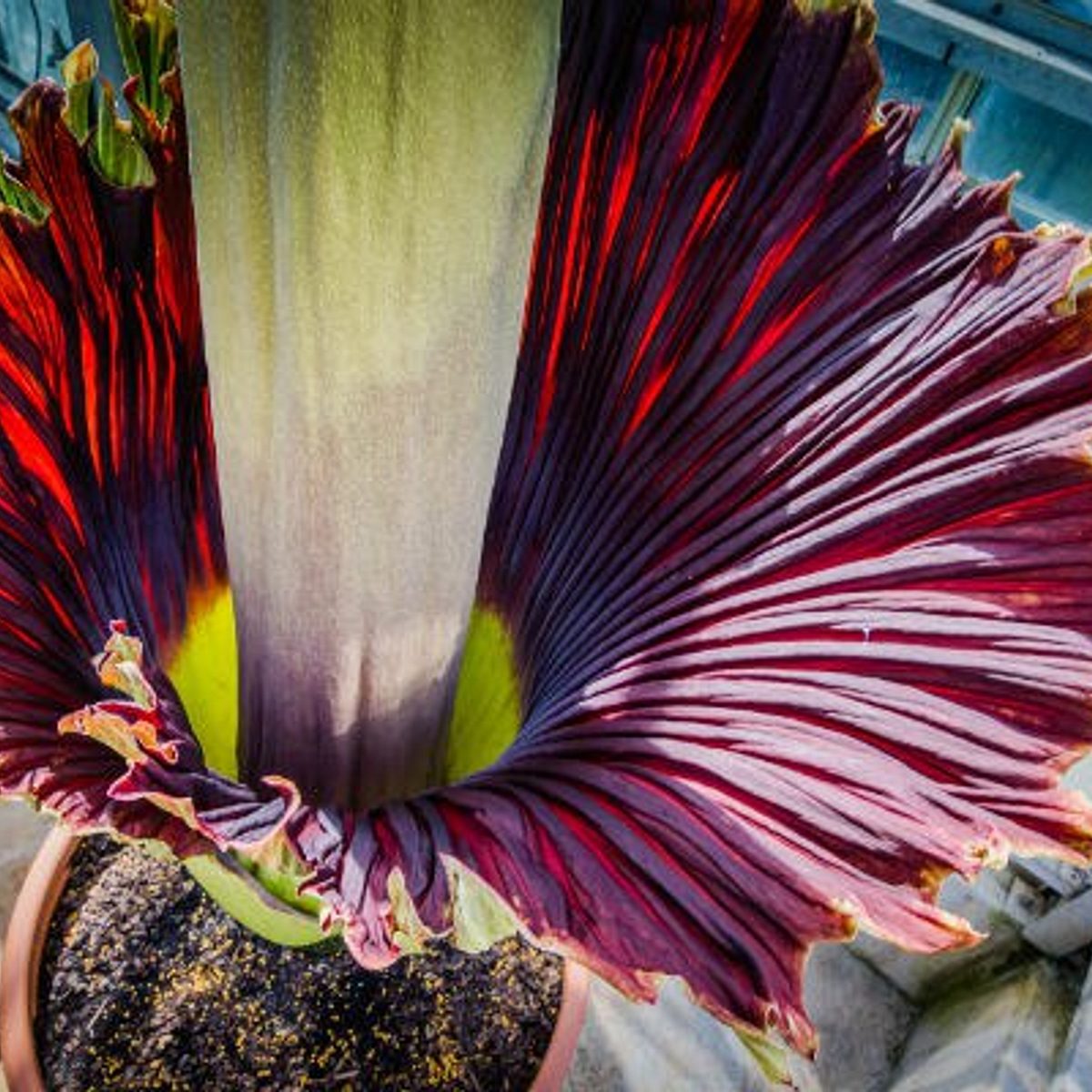


Titan Arum is a rare and endangered plant native to the rainforests of the Indonesian island of Sumatra.
While many have seen, and smelled, the eye-catching inflorescent others are often unaware of the plant's alternate phase - the leaf cycle.


Titan Arum's leaf cycle is a hugely important part of the plant's life cycle.
This annual event happens many times in a single plant's life and take as many as ten years to shift from this leaf cycle to the flower cycle.
As the plant begins the cycle, it emerges out of the ground to form a tree-like structure which is used to gather energy, ready to be stored in its the plant's tuber which is hidden under the soil.
After 12-18 months, the plant's leaf structure will collapse and lay dormant for up to a year before repeating the process once again, giving its tuber another energy boost.
Once the tuber has received enough energy, instead of producing a leaf, the plant will produce a flower.
Titan Arum plants currently in the leaf cycle are on display in the Amazon Waterlily Pavilion.

The leaf cycle process can take up to 10 years to gather enough energy to produce a flower for the first time.
Once the plant has produced its first flower, it can take three to five years for another flower to emerge - it's a very slow process and what makes flowering events so rare and exciting.
Once in a flowering cycle, the Titan Arum will emerge from the ground and begin to produce what looks like a huge flower - some can be over 2m tall.
The dark crimson petal-like structure is actually a modified leaf, and the pointy part in the middle is called the spadix. At the bottom of the spathe, hundreds of the tiny real flowers are hidden below.
The plant is famed for its revolting smell, which has been likened to smelly feet, stinky cheese and dead animals - hence its nickname of the Corpse Flower. The pointy spadix is where the bad smell is produced.
It's a tactic to attract pollinators who just love feasting on rotting flesh: flesh flies, carrion beetles and sweat bees.
The plant only produces the smell at night - which is when these insects are out and about - but it only smells for the first two nights.
In their hunt for a meal, pollinators travel to the plant. If they are already covered in pollen from an altogether different plant, they will dust it onto the female flowers, which open on the first night. This is where the seeds are made.
On night two, the male flowers open and expose their pollen. Insects get covered in the pollen and take it to another stinky plant, which hopefully has some female flowers open.
This means that for pollination to be successful, plants need to flower two or three days apart.
The smell is strong enough to spread a long distance - as far as 5km - so it is detected by insects a long way away.
Once fertilised, the flowers will start to make seeds which will be covered in juicy red fruit in about nine months' time. Rhinocerous hornbill birds love to gobble them up, then poop out the seeds somewhere else in the forest, giving the plant a chance to grow elsewhere.
After a few days of blooming, the inflorescence of Titan arum will start to collapse, eventually leaving just the the berry-like fruits on display.
If the plant sets seed, it will likely die. However, if the plant does not set fruit, it will then become dormant again, with the tuber waiting to start a new leaf cycle once again.
In cultivation, for Titan arum to produce seed, its plants need to be hand-pollinated with pre-frozen (and then defrosted) pollen from a different plant.